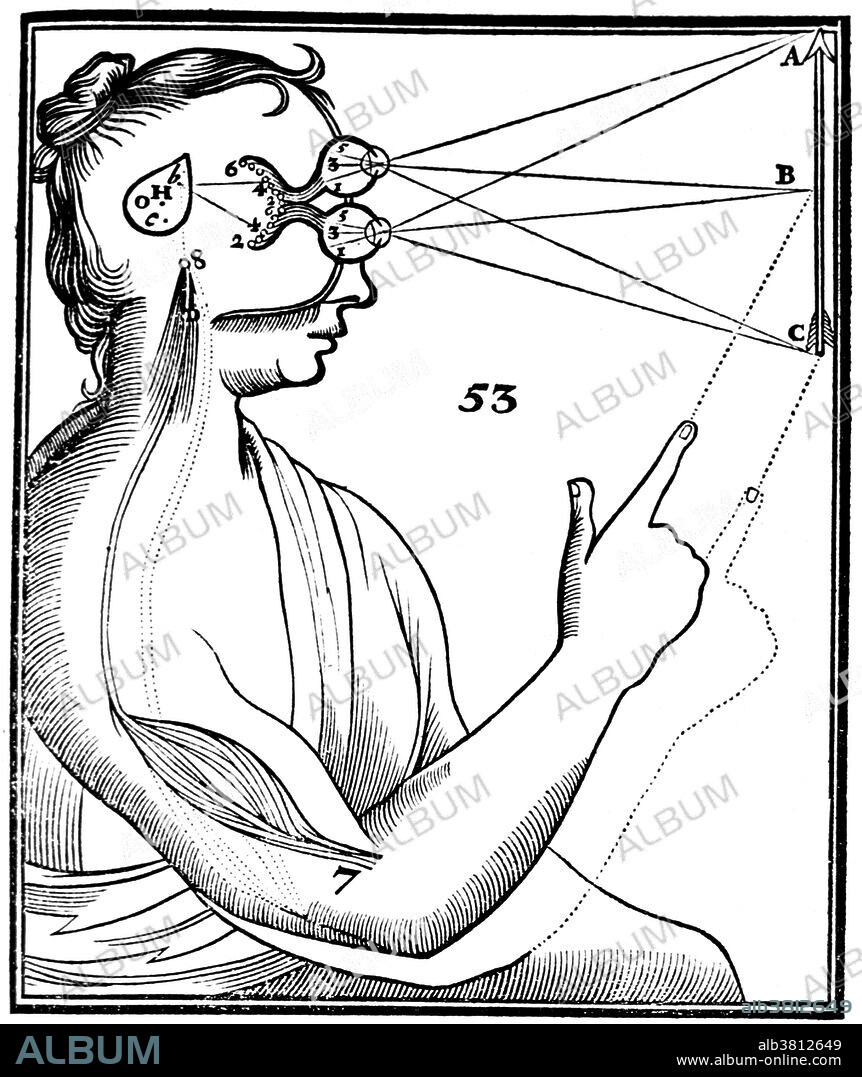alb3812649
René Descartes, Vision and External Stimuli

|
Add to another lightbox |
|
Add to another lightbox |



Title:
René Descartes, Vision and External Stimuli
Caption:
Woodcut of eyes on a human figure, represented above each other and focused on an arrow at right; lines extend from the eyes to the mid and terminal points of the arrow; also shown is portion of the brain responsible for automatic response. Appeared in Tractatus de homine, et de formatione foetus by Descartes, (1677) showing the relationship between the sensory perception of an image and muscular action. René Descartes (March 31, 1596 - February 11, 1650) was a French mathematician, philosopher and physiologist. Living on his modest inherited wealth, Descartes traveled, studied, wrote, and served as a soldier in Holland, Bohemia and Hungary. He created analytical geometry, which translates geometrical problems into algebraic form so that algebraic methods can be applied to their solution. Conversely he applied geometry to algebra. He propounded Cartesian dualism, stating that mind and matter are two distinct substances which can interact. He believed that god is the prime mover of matter, and that everything has a cause. Descartes died in 1650, at the age of 53, soon after becoming tutor to queen Christina of Sweden. The cause of death was said to be pneumonia.
Credit:
Album / NLM/Science Source
Releases:
Model: No - Property: No
Rights questions?
Rights questions?
Image size:
3600 x 4277 px | 44.1 MB
Print size:
30.5 x 36.2 cm | 12.0 x 14.3 in (300 dpi)
Keywords:
1677 • 17TH CENTURY • ART • ARTWORK • BW • CO-ORDINATION • COORDINATION • DESCARTES • DIAGRAM • DRAWING • EXTERNAL STIMULI • EYE • EYEBALLS • EYES • FOCUS • FOCUSING • FOCUSSING • HAND EYE • HISTORIC • HISTORICAL • HISTORY • HUMAN BODY • HUMAN FIGURE • ILLUSTRATION • MEDICAL • MEDICINAL • MEDICINE • OCULAR • RENATUS CARTESIUS • RENÉ DESCARTES • RENé DESCARTES • SCIENCE • SENSORY PERCEPTION • SENSORY SYSTEM • SENSORY • SIGHT • VISION • VISUAL • WOODBLOCK • WOODCUT • XYLOGRAPHY
 Pinterest
Pinterest Twitter
Twitter Facebook
Facebook Copy link
Copy link Email
Email

